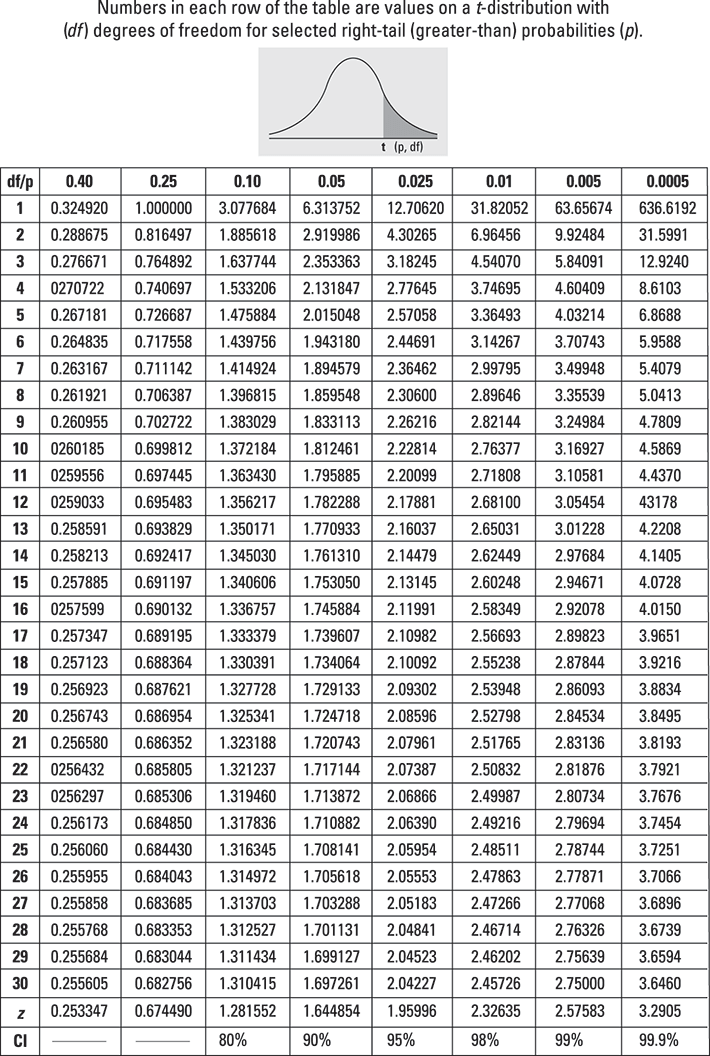For A Given Df Value, How Does T âë†â€” Change As C Increases?
When the sample size is large (at least xxx), or you know its standard deviation, y'all typically use disquisitional values on the Z-distribution to build the margin of error. When the sample size is pocket-size (less than 30) and/or the population standard deviation is unknown, you use the t-distribution to find critical values. (At roughly 25 or 30 degrees of liberty, the values of the t-distribution begin to match those of the Z-distribution. So, a sample size of 30 is not an must-have requirement, but it'll work well in many situations.)

To assist you lot find disquisitional values for the t-distribution, yous can use the last row of the t-tabular array, which lists common confidence levels, such as 80%, 90%, and 95%. To detect a critical value, look up your confidence level in the bottom row of the table; this tells you which column of the t-table y'all need. Intersect this column with the row for your df (degrees of liberty). The number you see is the disquisitional value (or the t-value) for your confidence interval. For example, if you want a t-value for a 90% conviction interval when you lot accept ix degrees of liberty, go to the lesser of the table, find the column for 90%, and intersect it with the row for df = 9. This gives you a t -value of 1.833 (rounded).
Across the meridian row of the t-tabular array, y'all see right-tail probabilities for the t-distribution. But confidence intervals involve both left- and right-tail probabilities (considering you add and subtract the margin of error). So one-half of the probability left from the conviction interval goes into each tail. Yous need to accept that into account. For case, a t-value for a 90% conviction interval has 5% for its greater-than probability and 5% for its less-than probability (taking 100% minus xc% and dividing past two). Using the top row of the t-table, you would have to look for 0.05 (rather than 10%, as you might be inclined to exercise.) Merely using the bottom row of the tabular array, you just look for 90%. (The outcome yous become using either method ends up being in the aforementioned cavalcade.)
When looking for t-values for confidence intervals, apply the bottom row of the t-table every bit your guide, rather than the headings at the summit of the table.
About This Article
This commodity can be found in the category:
- Statistics ,
For A Given Df Value, How Does T âë†â€" Change As C Increases?,
Source: https://www.dummies.com/article/academics-the-arts/math/statistics/how-to-find-t-values-for-confidence-intervals-169841/
Posted by: rosswharry.blogspot.com


0 Response to "For A Given Df Value, How Does T âë†â€” Change As C Increases?"
Post a Comment